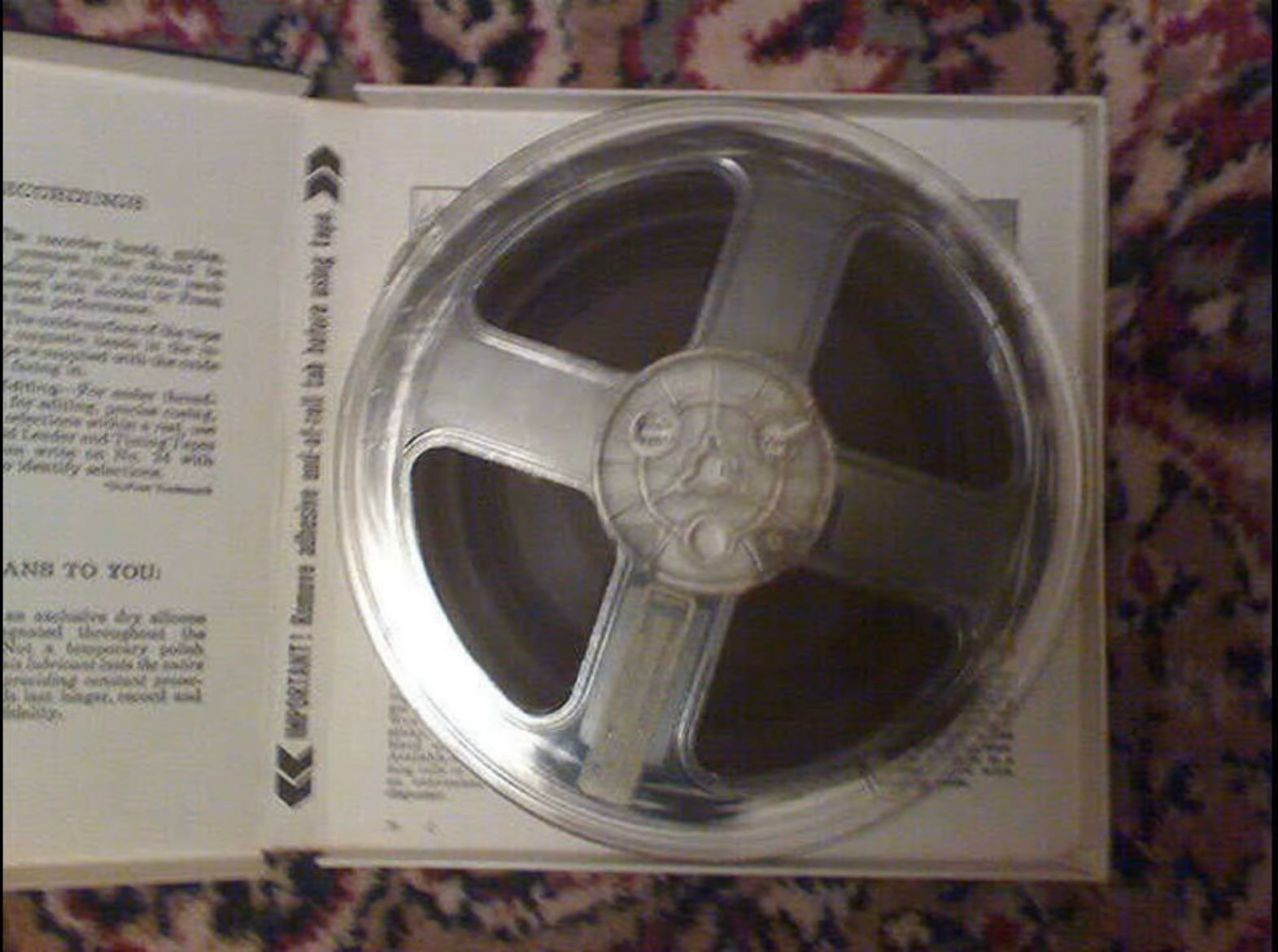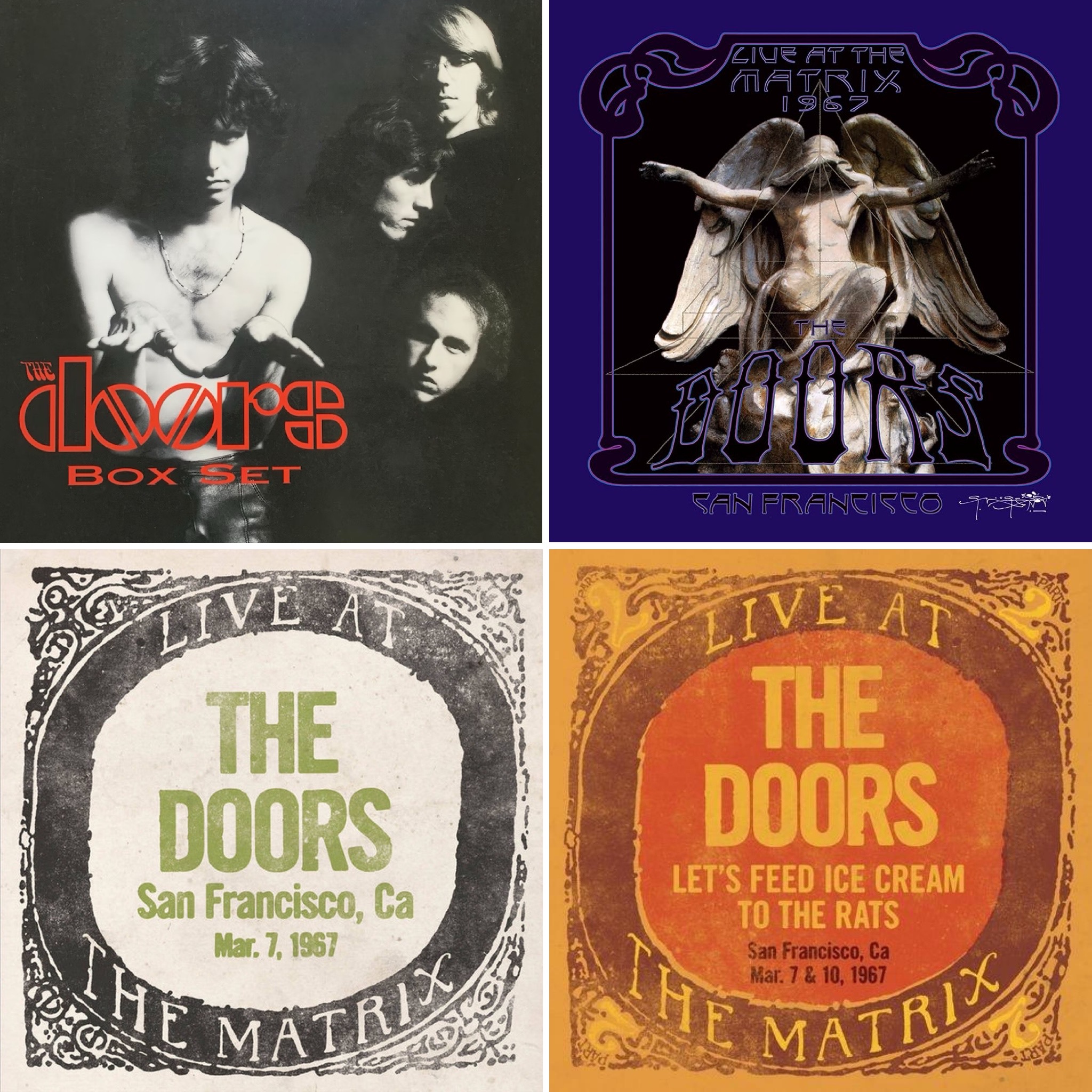The Doors’ Early Legacy Endures with “Live at The Matrix 1967: The Original Masters”
The crown jewel of early Doors live recordings finally released in their entirety
.jpg) Located at 3138 Fillmore Street, The Matrix was the hub of the “San Francisco sound” in the late 1960s. The pizza parlor turned nightclub was spearheaded by the members of Jefferson Airplane in 1965, who became the default house band. Whether it was Big Brother and the Holding Company, Steve Miller Band, or Quicksilver Messenger Service, spectators that attended shows at the Matrix witnessed Bay Area bands in a loose environment that was a far cry from Bill Graham’s grandiose Fillmore West.
Located at 3138 Fillmore Street, The Matrix was the hub of the “San Francisco sound” in the late 1960s. The pizza parlor turned nightclub was spearheaded by the members of Jefferson Airplane in 1965, who became the default house band. Whether it was Big Brother and the Holding Company, Steve Miller Band, or Quicksilver Messenger Service, spectators that attended shows at the Matrix witnessed Bay Area bands in a loose environment that was a far cry from Bill Graham’s grandiose Fillmore West.
In early March 1967, Venice Beach’s The Doors held a four-night residency at The Matrix. Compared to the mellow nature of the San Francisco scene, The Doors represented the darker side of the psychedelic 60s. Poetic shaman screams, Spanish flamenco flourishes, percussive jazz fills, and hypnotic Vox Continental runs gave the band a never to be duplicated trademark sound.
Another fascinating piece of Matrix history is the library of live recordings. Co-owner Peter Abram recorded most shows on an Akai tape recorder integrated into the soundboard. Live albums released by The Great Society, Steppenwolf, and The Velvet Underground wouldn’t exist if it wasn’t for Abram’s interest as a budding archivist. While these recordings don’t have the polish of what would come off a Rolling Stones Mobile Truck, they are far more forgiving than most inaudible cassette bootleg recordings of the time.

The recordings of The Doors’ Matrix residency have an interesting backstory. Between March 7th and 10th, the band performed three sets each night, all captured onto tape. The 8th and 9th got wiped with another performance, so all that exists are the recordings from the 7th and 10th. Peter Abram made cassette copies of his Scotch 201 quarter-track tapes and gave them to Elektra CEO Jac Holzman, who wasn’t keen on a live album this early in The Doors’ career. They were stored in Elektra’s vaults until stolen when the earliest known bootlegs started to emerge. To provide the fans with never-before-heard rarities, two tracks from The Matrix tapes appeared on The Doors Box Set in 1997, albeit in horrendous bootleg quality. In 2002, former Doors manager Danny Sugerman obtained a CD-R sampler from Abram as an enticement to purchase the master tapes. Plans for a release of the Matrix tapes were aborted in 2006 when Rhino/Doors Music Company realized third-generation copies were in their possession. It didn’t stop them from releasing the curated 2 CD set Live at The Matrix 1967 in 2008 using those faulty sources. To avoid litigation for copyright master violation, Doors management purchased the master tapes from Abram in 2009. Flash forward to 2017, Record Store Day releases and bonuses on box sets allowed the public to hear these recordings in far superior quality to what was released prior. After a hairy history, Live at The Matrix 1967: The Original Masters finally provides what many Doors fans wished for.

The fact that The Doors’ debut album had only been out for two months is astonishing to consider with the timeframe these recordings took place. The original material stems from their debut and yet-to-be-recorded sophomore effort Strange Days. Hearing this particular material is a fresh take since the live renditions stray from the studio arrangements most Doors diehards know off the back of their hands. Working in a loose live environment allowed for extended instrumental passages and extra wordplay from Morrison. Originals aside, the band pays homage to the blues with renditions of John Lee Hooker’s “Crawling King Snake” and Bo Diddley’s “Who Do You Love.” The Doors’ love for jazz goes unnoticed with their renditions of Miles Davis’ “All Blues” and “Bags’ Groove,” both of which haven’t seen the light of day until now.
The contents of the set comes housed in a colorful box with psychedelicized photos of the band. Each of the 5 LPs comes housed in a poly-lined sleeve, with the 7” tucked at the bottom of the box in a specially designed jacket. The four-panel insert features credits and liner notes by journalist Joel Selvin. His summation of the 1960s San Francisco music scene and the history of The Matrix are more insightful than his inaccurate statements on the legend of these first-generation tapes. Stories of the band being duped out of $75,000 by people claiming to own the tapes in the 1970s is a shallow front to protect the wrongdoings of Doors management. All one has to do is be amongst diehards on forums to know the true story. Why not ask someone who was there to provide some testimonials? Peter Abram and details of his recording gear? Bruce Botnick’s technical notes? Scans of tape boxes? So much more could’ve been accounted for to make this release stand out more as a historical document.
It must’ve been a revelation for Bruce Botnick to master these first-generation tapes digitally after working with the third-generation tape copy back in 2008. For fifteen years, Bernie Grundman has been the de facto lacquer cutter for Doors vinyl pressings. He does a tremendous job translating these recordings onto vinyl. The vinyl, pressed at GZ Vinyl, played back beautifully without any pops or clicks. There was some concernable distortion on “Who Do You Love,” which was an audible artifact unable to be fixed digitally. Any difference in sound quality depends on Abram’s recording setup on a given night. Abram had microphones hung over rafters to capture the recordings on March 7th. The result is the band sounding distant, with Jim’s vocals dominating the overall mix. The recordings from March 10th have all the instruments close mic’d and Jim’s vocal microphone fed through a reverb unit for added ambiance. For an elaborate audience recording, they sound spectacular!
Live at The Matrix 1967: The Original Masters is a crown jewel in the arsenal of archival Doors releases. It represents the band’s sound at its embryonic stage before “Light My Fire” became an anthem for the “Summer of Love” that propelled The Doors to stratospheric heights.











































